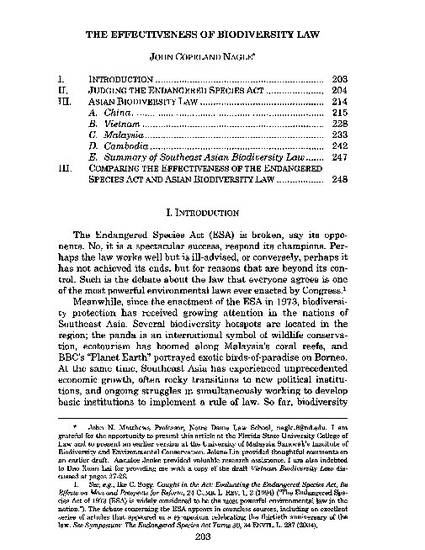
- Environmental Law and
- Law
The Endangered Species Act (ESA) has generated a heated debate between those who believe that the law has succeeded and those who believe that the law has failed. The resolution to that debate depends upon whether the law’s stated purposes or some other criteria provide the basis for judging a law’s effectiveness. Meanwhile, since the enactment of the ESA in 1973, biodiversity protection has received growing attention in the nations of southeastern Asia. So far, the law has been much less effective in protecting Asian biodiversity from habitat loss, commercial exploitation, and other threats, yet southeastern Asia’s biodiversity law has not faced the heated debate that characterizes discussions of the ESA in the United States. The ESA is far more successful in preserving biodiversity than its Asian counterparts. But we expect our laws to be far more successful. So the real question is not whether our laws have succeeded, but whether our expectations of the law are appropriate. This article considers these questions by comparing the legal protection of biodiversity in the United States, China, Vietnam, Malaysia, and Cambodia.
Available at: http://works.bepress.com/john_nagle/5/

Originally published in Journal of Land Use and Environmental Law.